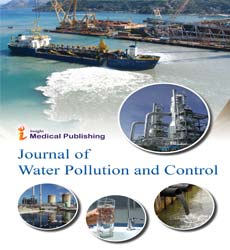Villagers' Livestock and Poultry Breeding Industry Water Pollution Prevention and Control Strategies Under the Rural Revitalization Strategy
Shophia Stevens*
Managing editor, Journal of Water Pollution and Control, London, UK
- *Corresponding Author:
- Shophia Stevens
Managing editor
Journal of Water Pollution and Control
London, UK
E-mail: waterpollut@imedresearch.com
Received Date: May 10, 2021; Accepted Date: May 24, 2021; Published Date: May 31, 2021
Citation: Stevens S (2021) Villagers' Livestock and Poultry Breeding Industry Water Pollution Prevention and Control Strategies Under the Rural Revitalization Strategy. J Water Pollut Control. Vol. 3 No. 3:16.
Abstract
One of the most important pathways for rural revival is the diversification of villagers' livestock and poultry breeding patterns in response to local conditions. Design various livestock and poultry breeding operation modes, as well as water pollution prevention and control strategies, and establish a coordinated mechanism for villagers' breeding and water pollution prevention. Control of water pollution, such as the establishment of a safe treatment station for dead cattle and poultry is in order to fulfil the goal of win-win collaboration between the interests of villagers, people's needs, and the rural ecological environment.
Introduction
Villagers who raise cattle and poultry must meet not just their own family's requirements, but also the wants of the metropolitan market. Some villagers have moved to primarily involved in livestock and poultry production as a result of the twin stimulant of market demand and development of their personal economic income. The scale of villagers' livestock and poultry husbandry has continued to expand, as has their share of the rural economy. Villagers' increased livestock and poultry husbandry has put tremendous pressure on the environment, as well as posed some challenges for government oversight. Villagers' increased livestock and poultry husbandry has put tremendous pressure on the environment, as well as posed some challenges for government oversight. Water contamination in the cattle and poultry farming industries is similarly tough to control centrally. In 2017, the national plan for rural revitalization requested that the number of cattle and poultry farms, which are essential avenues for rural revitalization, be increased, but rural sewage treatment infrastructure was lacking.
Villagers' Livestock and Poultry Breeding Park Mode and its Strategies for Prevention and Control of Water Pollution
The villagers are the village's masters, and they are the driving force for rural rejuvenation. The government should assist the villagers in developing a diverse livestock and poultry model in order to grow the rural economy, boost village democracy, and emphasise the importance of villagers' autonomy in the rural environment. Following that, several water pollution prevention and management strategies are established based on distinct breeding patterns and parameters such as climate, population density, and land area of the communities.
Livestock and poultry breeding mode based on the family and its strategies for prevention and control of water pollution
For villagers who are unwilling to participate in breeding parks and farms, and have a small number of livestock and poultry breeding, as well as special retail households with inconvenient transportation and closed information, they can follow the familybased livestock and poultry breeding model.
Conclusion
The motto "green water and green mountains are golden mountains and silver mountains" is deeply established in the hearts of the people as part of the rural rehabilitation strategy. The development of villagers' livestock and poultry breeding industries cannot be at the expense of environmental pollution, and rural revitalization and rural industrial development cannot be at the expense of the rural ecological environment. The prevention and control of villagers' livestock and poultry breeding water pollution should be the first priority in rural environmental protection.
Open Access Journals
- Aquaculture & Veterinary Science
- Chemistry & Chemical Sciences
- Clinical Sciences
- Engineering
- General Science
- Genetics & Molecular Biology
- Health Care & Nursing
- Immunology & Microbiology
- Materials Science
- Mathematics & Physics
- Medical Sciences
- Neurology & Psychiatry
- Oncology & Cancer Science
- Pharmaceutical Sciences
